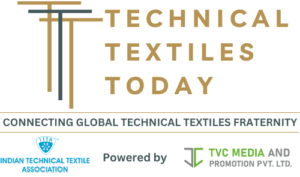Microban International, globally recognized for its antimicrobial and odor-control technologies, has announced a major portfolio expansion with the launch of H₂O Shield — its first-ever water-resistant textile finish, free from PFAS and PFOS. This new product line aligns with rising industry and consumer demand for sustainable, non-toxic alternatives in textile treatments.
H₂O Shield is a customizable solution developed to help brands transition away from per- and polyfluoroalkyl substances (PFAS), including PFOS — chemicals under scrutiny for their environmental persistence and potential health impacts.
The H₂O Shield portfolio comprises four tailored repellent finishes:
- WR1000: Delivers water repellency for low-contact textile products like shower curtains, tents, and awnings.
- WR1001: Focused on moisture-wicking performance for activewear, including ski and performance jackets.
- WR1002: Mitigates chalking and color shift on dark or scratch-prone textiles like gloves and hiking gear.
- WR1003: Enhances tear resistance and addresses seam slippage in backpacks and outdoor gear.
To improve treatment efficiency on more challenging textiles, Microban offers an optional WR-P pretreatment, which increases wash durability and reduces chemical usage by up to 20%.
In performance testing, H₂O Shield achieves a rating of 80+ on the AATCC TM22 spray test and maintains effectiveness even after 20 or more laundering cycles. It can also be seamlessly integrated with Microban’s antimicrobial and odor control technologies for multi-functional performance.
President Michael Ruby emphasized the value of Microban’s holistic support:
“Microban provides a unique turnkey support structure, assisting our partners in combining finishing technologies while ensuring compliance and compatibility. Partners can also leverage our technical and testing support and trusted brand names.”
He noted that the integrated technology offering helps brands deliver durable, high-performance textiles that meet evolving consumer expectations.
H₂O Shield can be applied using standard wet chemistry techniques, including pad baths and exhaust processes post-dyeing, ensuring ease of adoption in existing production lines.
